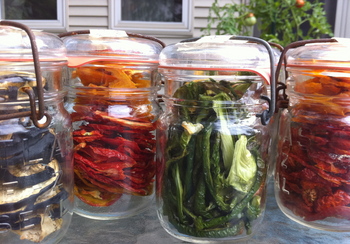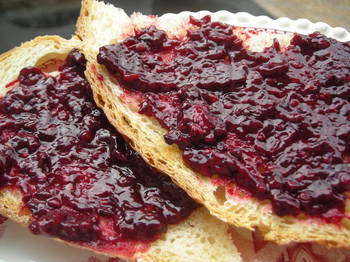Storing harvest bounty: canning vs. dehydrating
/
Last winter I received Mary Bell’s Food Drying with an Attitude: A Fun and Fabulous Guide to Creating Snacks, Meals, and Crafts - and I put it aside because I did not have a dehydrator. Like last year, I started this season with drying tomatoes in my oven, but the tomatoes take two full days to dry in the oven at 200 degrees. So I bit the bullet and bought an electric dehydrator - one built for the task.
I purchased the dehydrator week ago, reread all of Bell's engaging and intriguing book, and I have not turned the machine off since. I pack slivers of color, once hefty tomatoes and gleaming eggplants, into airtight jars and debate the pros and cons of dehydrating vegetables vs. canning vegetables. Here are my thoughts so far - I look forward to hearing yours.
Dehydrating pros
- Food is considered raw when dehydrated below 105 degrees (because it maintains enzymes and nutrients that are leached by higher temperatures).
- The labor involved is minimal. I cut the vegetables at night and pack them into jars in the morning.
- The equivalent ingredients take up less room when dehydrated than when canned.
Dehydrating cons
- Dried fruit and vegetables do not last as long as canned items.
Canning pros
- The recipe is finished when you open the jar, as opposed to drying the basic ingredients, and then making a recipe in the winter. (This could also be considered a con.)
Canning cons
- The labor involved is focused, hot, and continuous. From cooking the sauce, to the hot water bath, to preparing the jars - unlike dehydrating, it does not happen while you sleep.
This last point for me is the crux of the matter. A food preservation technique that is self-contained, creating results while I sleep, is incredible. To me, that is a winning food preservation technique.
Here is the article on annarbor.com






